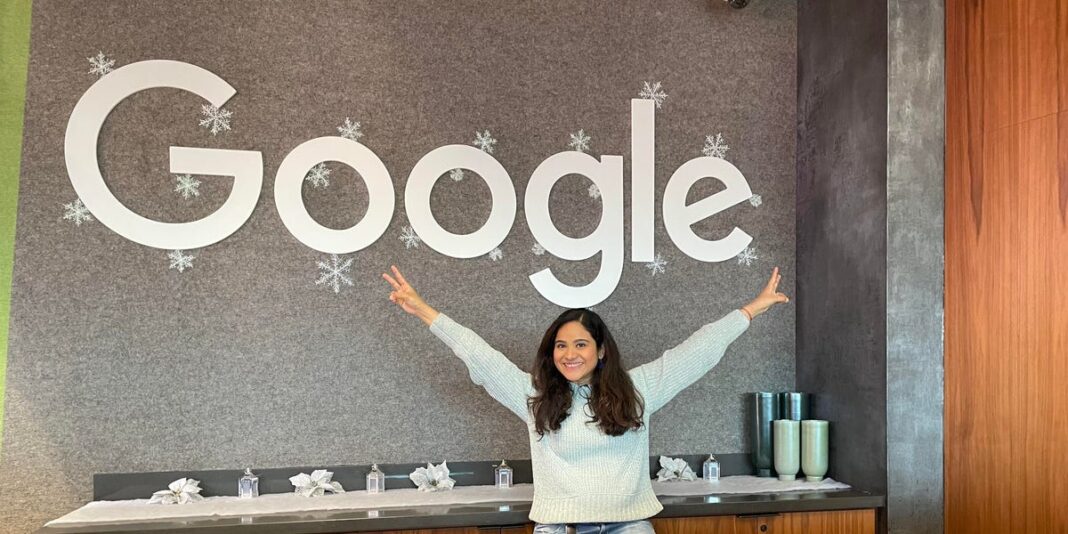This as-told-to essay is based on a conversation with Sonakshi Pandey, a cloud computing product manager at Google in Seattle. It has been edited for length and clarity. Business Insider has verified her employment history.
I was three years into my career as a software engineer when I realized I wanted to challenge myself.
I loved coding but was keen on a role that was less desk-bound and encouraged me to meet people and speak in public, something that made me anxious because I have always been an introvert.
I found that a solution architecture role would be a good entry point, and I interviewed to move to Amazon Web Services, from Amazon.com, where I was at the time.
I got the role and had the opportunity to speak at client meetings.
But my first few presentations were very rocky: I struggled with confidence, imposter syndrome, and memorizing a script.
It took hours of practice presentations and guidance from various mentors to help me become a person who speaks comfortably at meetings and tech conferences.
Now, I’m selective about who I choose to mentor. Here’s why I do it and how I pick mentees:
Being a mentor benefits me
I mentor interns at Google and a variety of people at various stages of their careers who reach out on LinkedIn or other social media. I am also starting an advisory role at the University of Washington this summer.
I have found it to be a mutually beneficial relationship, where I get a lot from talking to them as well.
Having mentees from backgrounds like data analytics, solutions architecture, and people management has exposed me to parts of the tech landscape that I don’t know as much about.
Watching my mentees succeed not only gives me confidence about the impact I can create but has rekindled my passion for my field.
I have been mentoring for about four years now. Most of my mentorship relationships also turn into professional connections and become good opportunities for collaboration or support.
What I look for in mentees
As someone with close to 10 years of experience in Big Tech, I receive a lot of reachouts on social media and my email.
In the early days of setting up my tech Instagram and YouTube accounts, I was excited to help everyone who reached out and asked for my time.
I soon realized that I would need a way to filter mentees because not everyone would reciprocate or acknowledge the efforts I put into supporting them. This made me very protective of myself and the hours I was dedicating to mentorship.
What I look for in cold reachouts
I find that the best reachouts are the ones that show research and effort.
I always appreciate when people include something they learned from my content and how it helped them or feedback for my posts. Interactions that start with asking me more details or questions about a topic I mention are also a great way of connecting.
One of my reachouts introduced themselves by saying they completed a free certification after watching one of my videos and would like my help in using it to land a full time role, which stood out to me.
I find that it is a great way of establishing a two-way relationship instead of simply introducing themselves and requesting 15 minutes of my time.
A nice email also seems more thoughtful than a direct message on Instagram or a request to connect on LinkedIn. I naturally get a lot more of those, because they require such less effort.
Very few people do the hard work of going to my “About” page on YouTube and finding my email.
Long-term relationship building
I look for people who appear proactive and self-driven. I love when mentees set ambitious goals and seek resources to achieve them. They come to meetings with thoughtful questions and a desire to learn from my personal stories.
The mentees I have long-term relationships with are those who approach setbacks with optimism. They are also honest with me and true to themselves.
I advise those looking to become mentors to seek out similar traits. The best mentees are self-starters who come to meetings prepared and are keen on paying it forward.
Source link









